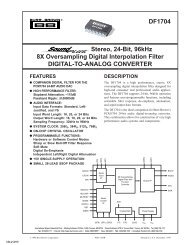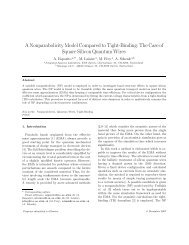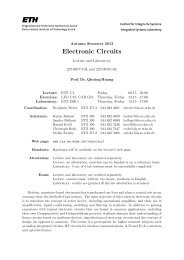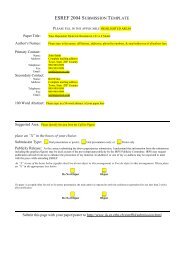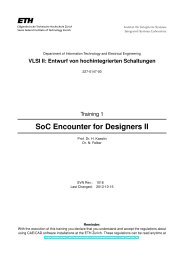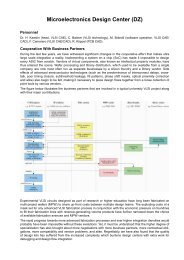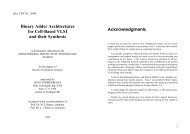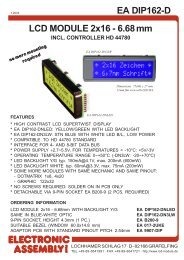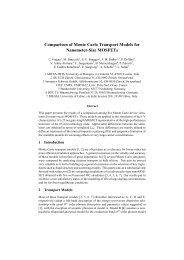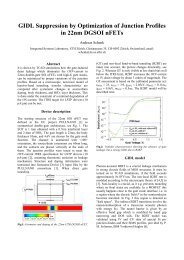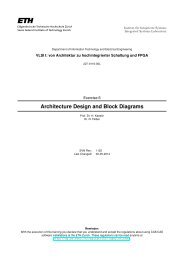Timing and Transients in Digital Circuits - Integrated Systems ...
Timing and Transients in Digital Circuits - Integrated Systems ...
Timing and Transients in Digital Circuits - Integrated Systems ...
Create successful ePaper yourself
Turn your PDF publications into a flip-book with our unique Google optimized e-Paper software.
) Are there any problems related to the <strong>in</strong>terface of the two subcircuits? Check the setup <strong>and</strong>hold marg<strong>in</strong>s!c) Verify the <strong>in</strong>ternal tim<strong>in</strong>g constra<strong>in</strong>ts for subcircuit B. The tim<strong>in</strong>g behavior of complex build<strong>in</strong>gblocks (such as ALUs) or macrocells (such as RAMs <strong>and</strong> ROMs) often differs significantly fromthat of elementary gates or flip-flops. Do you see any problems <strong>in</strong> subcircuit B?d) F<strong>in</strong>d solutions to solve the problems, if any,◦ by add<strong>in</strong>g comb<strong>in</strong>ational cells exclusively,◦ by add<strong>in</strong>g different storage elements!Which solution do you prefer?3.2 Design of safe f<strong>in</strong>ite state mach<strong>in</strong>esThis section extends our considerations to f<strong>in</strong>ite state mach<strong>in</strong>es <strong>and</strong> to circuits where a state mach<strong>in</strong>econtrols other parts of the circuit such as a datapath. If you lack the necessary background tounderst<strong>and</strong> <strong>and</strong> solve the problems, you may want to consult appendix B “F<strong>in</strong>ite State Mach<strong>in</strong>es” <strong>in</strong>our textbook to learn more about the various types of automata <strong>and</strong> how the compare.Exercise 4 : Automata types <strong>and</strong> their propertiesa) Which class of f<strong>in</strong>ite state mach<strong>in</strong>es does the circuit of fig.3 belong to? Expla<strong>in</strong> why!b) What is the latency of this circuit?c) Can it possibly develop hazards at the output?d) Answer the same questions for the circuit of fig.4!Exercise 5 : Parasitic <strong>in</strong>puts <strong>and</strong> cyclesYour are tasked with devis<strong>in</strong>g a controller for a semi-automatic gear unit. States are low gear, secondgear, top gear, reverse gear, <strong>and</strong> neutral. There are two separate <strong>in</strong>put signals, namely UpxSI <strong>and</strong>DownxSI.a) Capture the desired functionality <strong>in</strong> a state diagram!b) Complete that state diagram to make your design fault-tolerant! This means you must not onlyconsider the regular states <strong>and</strong> <strong>in</strong>puts, but the parasitic states (states which are present <strong>in</strong> ab<strong>in</strong>ary representation but unused) <strong>and</strong> all physically possible <strong>in</strong>put comb<strong>in</strong>ations too.c) Pick a mean<strong>in</strong>gful reset state!9



